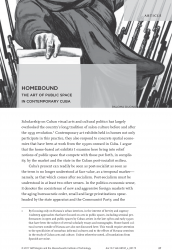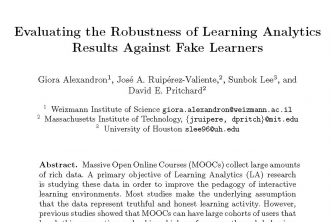
ARTMargins 6, 2 (June 2017): 27–49
Despite the home’s long history as a locus of cultural and political action in Cuba, serious studies of its informal residential culture are only now beginning to emerge. This article explores how the exhibition of art in private homes intervenes in debates about public space in Havana. It situates these exhibition practices historically with respect to the spatial politics of the Cuban Revolution of 1959, while mapping the reorganization of official and unofficial cultures after the demise of the Soviet bloc. Bringing into relief how these home exhibits problematize state and market alliances in the postsocialist context, I argue that these practices are doubly embedded in local as much as global polemics regarding the place—literally and metaphorically—of art today.





